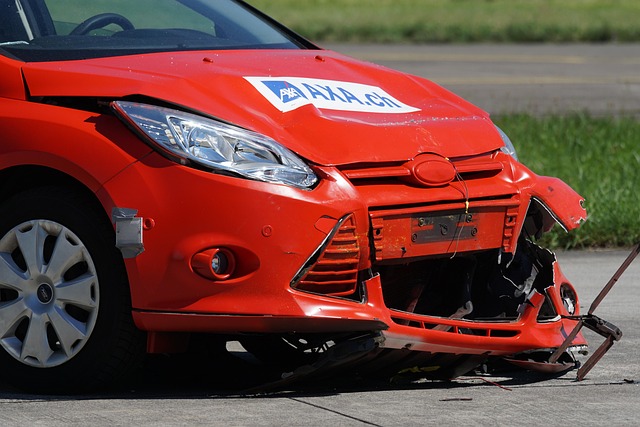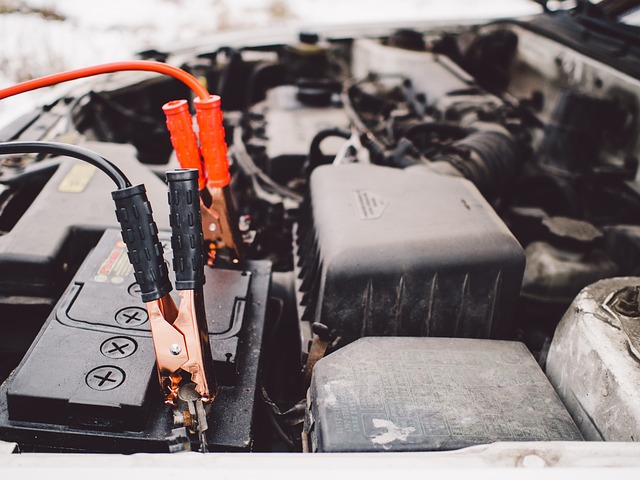Mastering Winter Accident Repair: Specialized Techniques for Safe, Lasting Fixes
Winter conditions pose unique challenges for drivers and auto repair shops, with cold weather and va…….
Winter brings both beauty and unique challenges, especially in the realm of accident repair. As cold weather sets in, various sectors, from transportation to construction, face increased risks and complexities when it comes to repairing damage caused by winter-related incidents. This article delves into the world of winter accident repair, exploring its significance, global impact, economic implications, technological innovations, regulatory landscape, challenges, successful case studies, and future prospects. By the end, readers will gain a comprehensive understanding of this critical field and its vital role in ensuring safety and efficiency during winter months.
Definition:
Winter accident repair refers to the specialized process of restoring vehicles, equipment, and infrastructure damaged by adverse winter conditions, such as icy roads, blizzards, and freezing temperatures. It involves a range of techniques and strategies tailored to address unique challenges posed by cold weather, ensuring safety and minimizing downtime.
Core Components:
Historical Context:
The concept of winter accident repair has evolved over centuries as transportation and infrastructure systems became more widespread in colder regions. Early practices focused on simple techniques like sand and gravel application to improve road traction. However, with advancements in technology and an increasing demand for efficient repairs, the field has developed specialized tools, materials, and methods. Today, it is a critical component of public safety and operational continuity during winter seasons.
Significance:
Winter accident repair is a global concern, with varying degrees of intensity depending on geographical locations and climate patterns. Here’s a glimpse into its international influence:
| Region | Challenges | Notable Trends |
|---|---|---|
| Northern Europe (Scandinavia) | Extreme cold temperatures, heavy snowfall, and rapid temperature changes contribute to widespread road damage and hazardous conditions. | Leading the way in innovative de-icing technologies and smart city infrastructure for real-time weather monitoring. |
| North America | Blizzards, ice storms, and freezing rain create challenging conditions for highways, bridges, and urban transportation. | Increasing adoption of salt and brine de-icing systems, along with advanced snow removal equipment. |
| Eastern Europe | Rapidly changing winter conditions, inadequate infrastructure maintenance, and economic constraints lead to significant road damage. | Focus on digital solutions for efficient fleet management and repair coordination during winters. |
| Asia Pacific (Japan, Korea) | Heavy snowfall and icy roads in mountainous regions pose unique challenges. | Investing in advanced road surface treatment technologies and implementing strict winter maintenance protocols. |
| Middle East | While less prone to heavy snow, hot and humid winters with sudden temperature drops cause unique problems. | Employing anti-frost coatings and specialized materials for infrastructure and vehicle repair. |
The economic aspects of winter accident repair are multifaceted, influencing both the public sector and private industries.
Technological innovations play a pivotal role in shaping the future of winter accident repair, offering improved efficiency, safety, and sustainability.
Key policies, regulations, and legislative frameworks govern the field of winter accident repair, ensuring safety standards, environmental protection, and efficient operations.
Despite significant progress, the field of winter accident repair faces several challenges and criticisms that require strategic solutions.
Case Study 1: Smart City Winter Maintenance in Copenhagen, Denmark
Copenhagen has implemented a comprehensive smart city initiative for winter maintenance, leveraging technology and data analytics. The city uses sensors on roads and vehicles to monitor conditions in real time. AI algorithms predict weather changes and optimize snow removal routes, ensuring efficient operations. This approach has significantly reduced salt usage, minimized damage to infrastructure, and improved overall road safety during winters.
Case Study 2: Innovative Road Surface Treatment in Japan
Japan’s National Route 453 features an advanced road surface treatment using a self-healing asphalt that repairs microcracks caused by frost heaving. This innovative approach has prolonged the road’s lifespan, reduced maintenance costs, and minimized disruptions during severe winter conditions. The project demonstrates the potential of sustainable and long-lasting solutions in winter accident repair.
Case Study 3: Proactive Winter Road Management in Canada
The province of Ontario, Canada, employs a proactive approach to winter road management. They use predictive modeling and historical data to plan repairs and snow removal well in advance. This strategy has led to faster response times, reduced travel disruptions, and improved overall public safety during severe winters.
The future of winter accident repair is filled with promising trends and opportunities, driven by technological advancements, changing environmental concerns, and evolving customer expectations.
Winter accident repair is an essential component of modern infrastructure management, ensuring safety, efficiency, and resilience during cold weather conditions. This article has provided a comprehensive overview of its global impact, economic considerations, technological advancements, policy frameworks, challenges, and future prospects. By embracing innovation, adopting sustainable practices, and fostering collaboration, the field can continue to enhance road safety and operational continuity in the face of changing climates and increasing demands.
Q: How do I choose the right de-icing material for my driveway?
A: Consider factors like salt tolerance, environmental impact, and cost. Eco-friendly alternatives like calcium chloride or magnesium chloride are effective and safer for concrete and vegetation.
Q: Can technology really improve road safety during winter storms?
A: Absolutely! Advanced sensors, data analytics, and AI can provide real-time insights into weather conditions, traffic patterns, and vehicle performance, enabling proactive maintenance and enhanced driver safety.
Q: What are some common causes of winter accidents on icy roads?
A: Common causes include skidding due to loss of traction, rapid changes in road conditions, inadequate tire tread, and excessive speed. Maintaining a safe following distance and adjusting driving techniques for icy conditions can help prevent accidents.
Q: How do I keep my fleet vehicles ready for winter weather?
A: Regular maintenance is key. Ensure engines are well-maintained, batteries are in good condition, and fluids (antifreeze, windshield washer fluid) are suitable for cold temperatures. Consider using winter-rated tires and keep an emergency kit in each vehicle.
Q: What can cities do to improve their winter road maintenance?
A: Cities can invest in advanced technologies like smart sensors, AI-driven snow removal planning, and autonomous equipment. Proactive maintenance, integrated transport systems, and collaborative repair models can also enhance the efficiency and effectiveness of winter road management.

Winter conditions pose unique challenges for drivers and auto repair shops, with cold weather and va…….

Winter conditions present unique risks for vehicle owners, leading to accidents causing various type…….

After a winter accident, thoroughly inspect your vehicle for existing damage, focusing on rust from…….

In the treacherous conditions that winter brings, the importance of experienced technicians in swift…….

Winter conditions create unique challenges for vehicle electronics, leading to increased demand for…….

After a winter storm, thorough vehicle assessment is crucial for effective winter accident repair. T…….